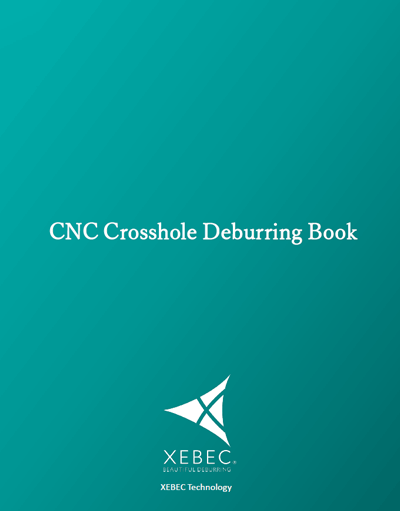Choosing a Deburring Method
How to know which deburring method is right for your application
There are many ways to deburr parts – from manual hand held tools to fully automated, lights out processes. Which is your best option? The answer is usually best answered after determining the following: Which method best achieves the lowest cost per piece produced AND meets your part quality and throughput requirements?
Considerations to help you determine the best deburring process for your application
- How many pieces do you have to process, and / or will this job repeat on a regular basis?
- What is the timeframe to complete the deburring process without adversely affecting throughput, work in process flow, customer deadlines, etc
- Do you have machine time available to add the deburring process?
- What is the value of the part and what is the total cost of poor quality if the deburring process is inconsistent? Total cost includes scrap of the part, missed production deadlines, rework, customer complaints, etc.
- Does the method increase costs from injuries resulting from cuts and repetitive motion injuries?
- Is sufficient manpower available to complete the parts in the required timeframe or are resources available to implement the process such as machine programming?
- What is the cost of the actual deburring tools used in the process?
- Does the process produce the required surface finish requirement?
- For on machine processes- how many pieces can be produced without stopping the machine to change deburring tools?
- Does the machine tool part orientation / fixturing allow access for the deburring tool?
Overview of the pros and cons of various deburring processes
Automated Deburring Methods
CNC / Robotic Deburring
On machine deburring using
Xebec ceramic fiber brushes and stones
On machine deburring using
Xebec ceramic fiber brushes and stones
On machine deburring using
Xebec BackBurr Cutter and Path
Process overview
Deburring surfaces or crossholes using Xebec brushes and stones in machine tools or robots including automated / lights out operation
Deburring surfaces using nylon impregnated brushes in machine tools or robots
Designed specifically for hole deburring, the Back Burr Cutter and Path consists of the spherical cutter specially designed for CNC deburring using the customized path data.
Pros
Longest tool life; greatest part quantity produced per tool
May be justified for smaller production quantities
Enables uniform edge shape
Maintains shape providing consistent, repeatable quality
Lower initial price than Xebec
Customized Program created for each application
Fastest machining time
Greatest variety of tool configurations & sizes
Long lasting carbide with specially designed coating
Best surface finish; polishing
Abrasive grains embedded in fibers grind on sides and ends
Helical blade prevents secondary burrs
Surface / crosshole deburring of materials up to 65Rc
Cons
Higher initial tool cost than nylon; best suited for production machining
Inconsistent grinding performance
For hole deburring only
Limited availability of specials
Relatively long machining time
Best utilized with custom path
Cutting action only on end of brush fibers (stones cut on entire surface)
Average surface finish
Information about application required prior to path creation
Nylon fibers deform over time
Manual Deburring Methods
Non-CNC
Manual deburring by hand
or hand held powered tools
Automated deburring using centrifugal
and vibratory media machines
Process overview
Employee uses abrasives, tools, blades, etc to manually, or use hand held powered tools, to remove burrs after machining process
A separate piece of equipment is designed to tumble metal parts and components to polish and deburr them to the desired finish. Abrasive material is typically added to the tumbler to improve the process.
Pros
Lowest initial cost for tools
Automation of edge-finishing and surface polishing
Requires no machine tool time
Consistent, repeatable quality
Deburring can possibly be performed internal to machining process time
Can process large quantity of small parts
Cons
Inconsistent repeatability
High equipment cost or outsourcing
Poor quality; high scrap
Additional floor space required
Requires manpower; can be time consuming creating production bottleneck
Separate process after CNC, can be time consuming
Possible employee injury from repetitive motion or cuts
Not optimal for hole deburring

Comparing CNC Tools for Crosshole Deburring
This guide presents the pros and cons of the various types of tools available for use in CNC for deburring crossholes.
Want to learn more about how to calculate the total cost of manual deburring?
Check out the article at the link below:


